
- Home
- News
- Analysis
- States
- Perspective
- Videos
- Education
- Entertainment
- Elections
- World Cup 2023
- Features
- Health
- Budget 2024-25
- Business
- Series
- NEET TANGLE
- Economy Series
- Earth Day
- Kashmir’s Frozen Turbulence
- India@75
- The legend of Ramjanmabhoomi
- Liberalisation@30
- How to tame a dragon
- Celebrating biodiversity
- Farm Matters
- 50 days of solitude
- Bringing Migrants Home
- Budget 2020
- Jharkhand Votes
- The Federal Investigates
- The Federal Impact
- Vanishing Sand
- Gandhi @ 150
- Andhra Today
- Field report
- Operation Gulmarg
- Pandemic @1 Mn in India
- The Federal Year-End
- The Zero Year
- Premium
- Science
- Brand studio
- Home
- NewsNews
- Analysis
- StatesStates
- PerspectivePerspective
- VideosVideos
- Entertainment
- ElectionsElections
- Sports
- Loading...
Sports - Features
- Budget 2024-25
- BusinessBusiness
- Premium
- Loading...
Premium
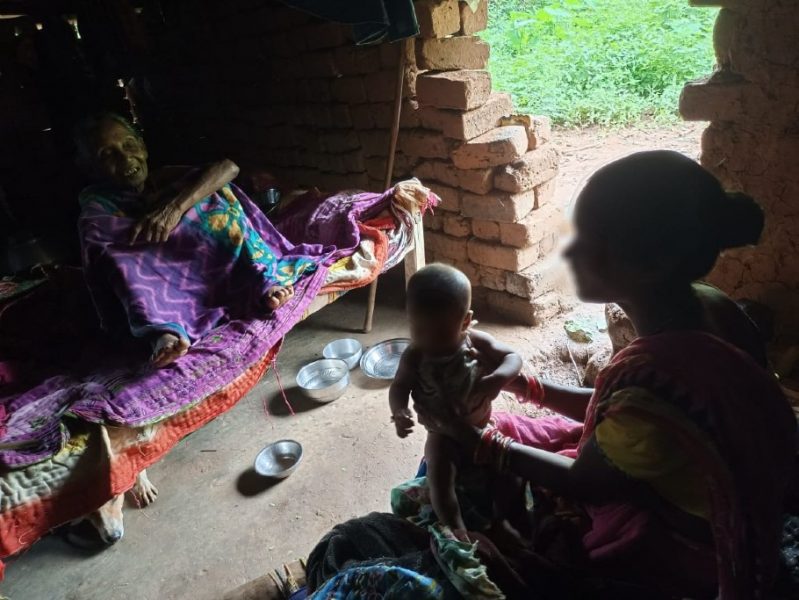
Schools shut, tribal kids led into child marriage
Lockdowns in the wake of the Covid-19 contagion have led to a spurt in school dropouts, child labour, child marriages and teenage pregnancies among impoverished communities of Odisha and Jharkhand.

“Barely two weeks into our marriage, he started coming home drunk, assaulting me, and forcing himself on me. When I got pregnant, the abuse got worse,” recounts Sabita. Sabita, 14, is six months pregnant. Until nine months before she was married to 21-year-old Ganga in December 2020, she had been a Class 7 student at an ashramshala (residential school) in Odisha’s Jajpur district....
“Barely two weeks into our marriage, he started coming home drunk, assaulting me, and forcing himself on me. When I got pregnant, the abuse got worse,” recounts Sabita.
Sabita, 14, is six months pregnant. Until nine months before she was married to 21-year-old Ganga in December 2020, she had been a Class 7 student at an ashramshala (residential school) in Odisha’s Jajpur district. She will discontinue her education to bring up her child.
***
“I was in love and did not know what was right for me. I made a mistake. Now I don’t know what to do,” rues Asha.
Five months after her school was closed because of a coronavirus-related lockdown, Asha, 13, eloped with 19-year-old Raisu. They were married in a small ceremony upon their return two days later. Two months pregnant now, she is willing to have an abortion, but can’t.
***
“When I reached his house, I was shocked to see that he already had a wife, a four-year-old son and five other family members – all living together in a one-room cemented house,” recalls Sita.
Currently enrolled in Class 7 at an upper-primary Kasturba Gandhi Balika Vidyalaya (KGBV) school, and “eager to attend classes”, 13-year-old Sita married Krishna, 28, in May 2021, only to flee his home within weeks.
***
These are not isolated cases. There were at least 493 incidents of child marriage of some form in just six blocks of Odisha and two blocks of Jharkhand between April 1, 2020, and July 31, 2021, according to a survey by A Society for Promotion of Inclusive and Relevant Education (ASPIRE), an NGO working on Right to Education. The Odisha blocks covered under the survey were Sukinda and Danagadi (Jajpur district), Koira and Kutra (Sundargarh), and Harichandapur and Joda (Keonjhar). The two in Jharkhand were Noamundi and Jagannathpur (West Singhbhum district).
In 85 per cent of the 493 cases, girls were under the legal age of 18 years (420). Boys were under the age of 21 years in 29 per cent cases (143). And of the 563 under-age individuals in these cases, 355 (63 per cent) were of the school-going age, that is under 16 years. In 224 cases, the marriages either ended or were suspended until the people involved would be of legal age.
Sabita’s story
A native of Sukinda block in Odisha’s Jajpur’s district, Sabita had lost her mother to tuberculosis when she was still a toddler. After the ashramshala, where she was a student of Class 7, was closed due to the Covid-19 lockdown on March 26, 2020, she returned to her village and began assisting her stepmother with household chores—cleaning, cooking, looking after cattle and poultry, and taking care of four younger siblings.
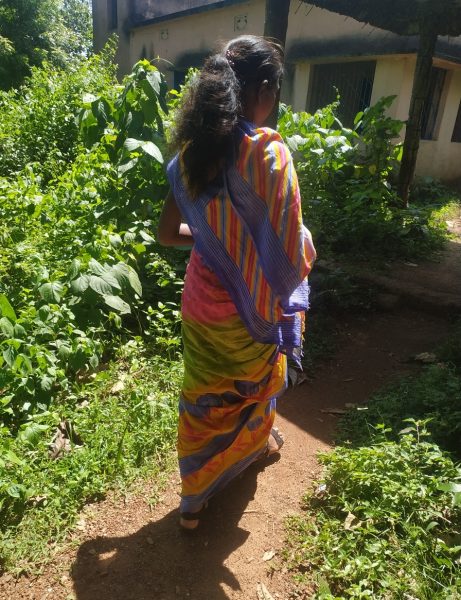
In November of that year, she was visited by her aunt and one Mansing Deogam, 42, with the proposal of her marriage with Deogam’s son, Ganga. Her family was not keen as Sabita was too young to marry. But she began speaking over the phone to Ganga and was drawn to him. “We spoke for hours—all night, every night, for nearly a month. He told me he had fallen in love with me. I reciprocated. He promised to take care of me, constantly persuading me to marry him,” says Sabita in Ho, her native tribal language. Ganga had dropped out of school after Class 5.
The next month, they eloped to his home in Gondia block of Dhenkanal district on his bike. When Sabita’s father Ramesh, 45, learnt that his daughter was missing, he understood “there was nothing to be done”. In many tribal communities, when two individuals elope, they are considered married.
Ganga brought Sabita back to her parents’ place four months later, stayed with the family for three days, and left after promising to return for his wife 15 days later. This was three weeks after he discovered that Sabita was pregnant with his child. A month passed, then another, and then a third, but there was no news of him. “I called him repeatedly from morning to night. The phone would keep ringing, but he would not answer,” recalls Sabita.
In late August, she heard that Ganga had remarried. Her father spoke to the local sarpanch, Dwarikanath Das, who then informed about the incident to the district’s child rights protection forum (CRPF) and ASPIRE, which has been working in the block on child rights and education for over five years.
“We have seen a rise in child marriages after the lockdown. A lot of children studying in ashramshalas have returned home and are getting married. We (the Panchayati Raj Institution) are committed to stopping child marriage in our community,” says Das.
The district’s child rights protection officer, Chintamani Sahoo, advised Ramesh to file a case against Ganga, but he refused. “I want to convince him to take my daughter back. If he leaves her, my daughter’s reputation will be tarnished,” he said. So, an eight-member team—comprising Sabita’s father and elder brother, three members from CRPF, two from ASPIRE, and one from a youth group—went to Ganga’s house on September 1 to reach a mutual understanding.
They found that Ganga had indeed remarried and was living with his newly-wed wife, his parents, and four younger siblings, in a one-room mud house. He denied having to do anything with Sabita and dismissed them, saying they were free to go to court or do anything they chose. Ganga’s father threatened to have them killed if they visited their house again. And they also heard from the villagers that Sabita was, in fact, Ganga’s second wife. He had abandoned his first wife, too, within months, and was now married a third time.
An FIR was registered against Ganga under four sections of the Indian Penal Code (IPC)–Section 376 for sex with a minor, Section 375 for rape, Section 498A for mental and physical abuse, and Section 367 for kidnapping. The IPC states: “In case either of the parties is less than 18 years old, the marriage is void, given the age of consent is 18 in India. Sex with minors under the age of 18 is a statutory crime.”
Police officer Sukanta Kumar Patra, who visited Ganga’s house thrice after the FIR, found him absent each time. He was finally held on September 9 at a bus stand in Bhubaneswar and is to be presented before a court soon.
Asha’s story
The daughter of a 38-year-old cattle herder, Asha was a student of Class 6 when her school was closed in March 2020. Her father works for a local farmer who has given him a place to live and pays in food supplies instead of cash. Her mother sells handia (local rice wine). When they run out of food, they depend on the 5 kg free rice provided to ration-card holders under a government welfare scheme.
In August, she eloped with 19-year-old Raisu to a nearby jungle. When they returned home after two days, they were married off in a small ceremony. Raisu, who had dropped out of school after Class 5 and become a labourer at 11, currently works as an electrician in a local factory.
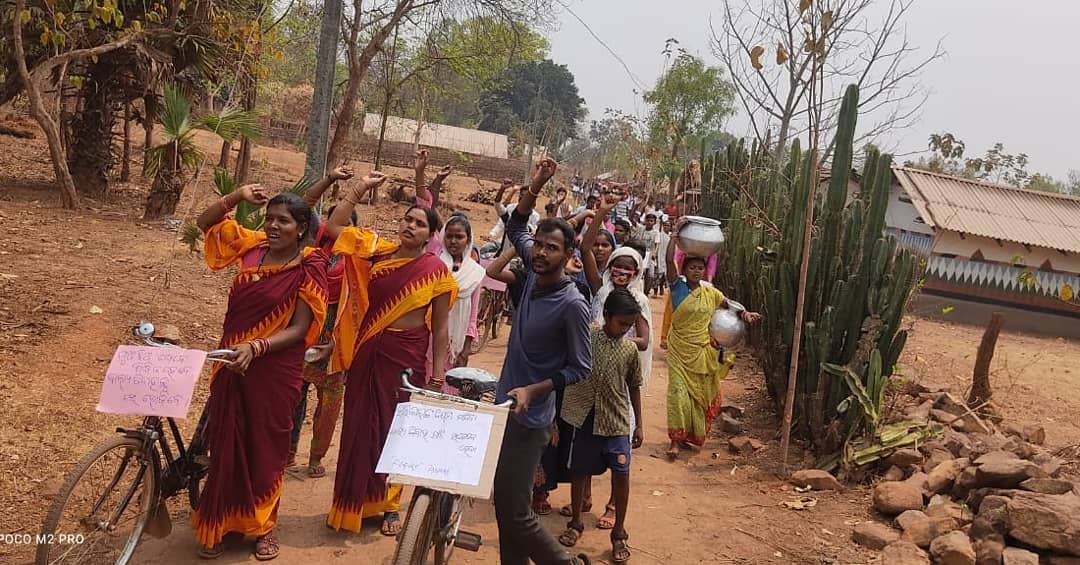
“When a girl and a boy, irrespective of their age, elope and have a physical relationship, it is a common understanding that the two would be married off. Traditionally, our community has made boys accountable for their actions by making them marry the girls they ran away with,” informs Karan Beshra, 30, a social activist who comes from the Santal Adivasi community.
But times are changing, albeit slowly, he adds. Now if one of the two, especially the girl, is under-age, members of the panchayat, school management committee, anganwadi centres, self-help groups, NGOs, CRPF, and youth volunteers in the village form a team and try to convince the families to let the girl stay at her maternal home until she is of legal age. They explain the health complications of early pregnancy and loss of education. In Asha’s case, too, a 10-member team tried to persuade the parents to put their marriage in abeyance.
Recalling the incident, 30-year-old social activist Rahul Rohan, who comes from the Sadar Adivasi community, says: “The children embraced each other, crying, and said they could not live apart. It took us nearly all night and the next day to convince them to wait for four years (until Asha would be 18).” She returned to live with her parents a month later.
In July 2021, when restrictions eased a little, Asha and her younger sister were sent to ASPIRE’s residential hostel, where she was found to be pregnant. “We do pregnancy tests of all children who come to us after being rescued from child marriage,” says the hostel’s teacher-cum-caretaker, Sasmita Mohanta.
Asha then revealed that Raisu visited her when her parents went out for work. The two would go to a jungle, or a nearby cement factory sometimes, to spend time together. When Asha’s parents were informed about her pregnancy, they wanted her to have an abortion. She was willing, too. But Raisu’s mother, Kandri Munda, 36, put her foot down: “This will be the first child in our family (in this generation). What would the people in our village say if they found out (about the abortion)?” She also threatened to send Asha’s family to jail if she tried to abort.
Indian women, married or unmarried, are legally allowed to have an abortion during a gestation period of 24 weeks. For girls below 18 years of age, parents’ consent is necessary. Village elders, social workers and ASHA health workers informed Munda that if the police were indeed called, she and her family would get into trouble, as Raisu was married to a minor.
The legal age for marriage for men is 21 years. And, according to the Prohibition of Child Marriage Act, 2006, “whoever, being a male adult above eighteen years of age, contracts a child marriage shall be punishable with rigorous imprisonment which may extend to two years, or with fine which may extend to one lakh rupees, or with both”.

But Raisu persisted: “We will not tell anybody. We will go away and start a new life somewhere else.” Asked how Asha would go back to school if she had a child, he bluntly said “she would not”.
Two months pregnant now and nervous as she narrated her story, Asha refused to be photographed. Her family has now relocated to another village in Sukinda block.
Sita’s story
When her school closed, Sita, a member of the Santal Adivasi community, joined her mother in selling homemade handia. She set up a little shop along a road in Danagadi block of Odisha’s Jajpur district and began selling the liquor in clay pots. Her father had died six years before due to kidney failure. Krishna Badara, 28, a regular visitor at her shop, took a liking to her. After a few months of courtship, mostly at her shop, he asked for Sita’s hand in marriage in May 2021. Her mother Srimati, who had herself dropped out of school after Class 5 and was now raising six children on her own, did not refuse.
When Sita reached Badara’s house, she discovered that he already had a wife, a four-year-old son and five other family members—all living together in a one-room cemented house. His first wife, mother and sister washed Sita’s feet in a steel plate (thali) and she was considered married.
“In some tribal cultures, the marriage ceremony is brief and does not involve too many rituals or a priest. In Santal and Munda tribal customs, women in the groom’s family wash his and his bride’s feet with turmeric water. If the boy takes a baraat, women in the bride’s family do the same,” explains Pranati Lohar, a 30-year-old social activist who comes from the Lohar Adivasi community.
Within weeks, however, Sita fled her in-laws’ home and returned to her mother. Soon, Badara visited her, asking her to return. “He kept telling me that he loved me and would keep me happy. I told him I was sorry, I had made a mistake. I wanted to continue studying,” recalls Sita. But Badara kept pursuing her. At the request of Srimati, who was finding it difficult to make ends meet, the panchayat urged ASPIRE to look after Sita.
Sita was now living with 78 other destitute children—all victims of child labour, child marriage, sexual harassment or domestic violence, or orphans and semi-orphans. Badara, “too embarrassed” to reach out himself, sent his wife to cajole Sita to return. The wife, whom Sita called ‘badi didi’ and whose name she did not know, came outside the hostel premises a couple of times between June and July.
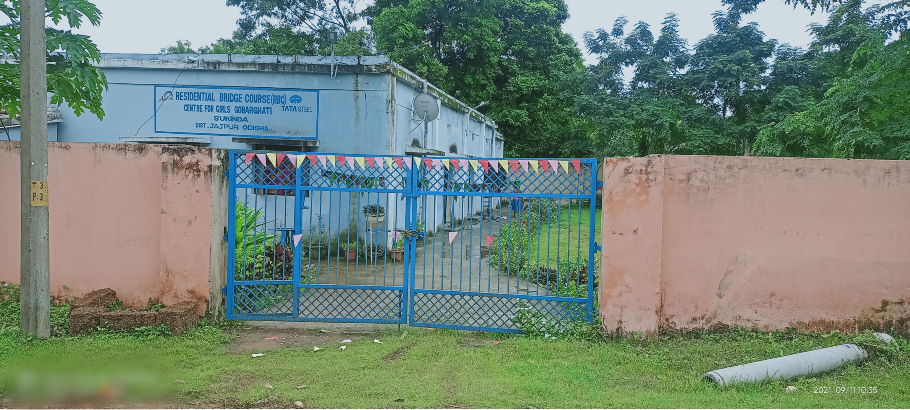
“She would tell me that he was threatening to kill himself if I didn’t return. ‘If anything happens to him, what will I do? Where will I go with my little son? Please come back, we will live happily’,” recalls Sita. These visits stopped after the teachers threatened to call the government’s Child Welfare Committee.
Child marriages: The cause and remedy
Data point to poverty as a key factor behind child marriages. In 71 per cent of cases in the ASPIRE survey, parent(s) of the children involved were manual labourers earning between Rs 1,000 and Rs 4,000 a month and raising between three and nine children within a single household.
Going by a class-wise differentiation, the tribal communities appear to be the most affected, with 69 per cent of children involved in the 493 cases belonging to scheduled tribes. Other backward classes account for 20 per cent cases, scheduled castes 11 per cent, and general two per cent.
“Most of the tribal people are impoverished, and unaware about health complications and economic costs of child marriages. In 30 per cent of the cases that I have seen, parents give away their children to ease their financial burden,” says Mihir Jena, chairman of Odisha’s Jajpur District Child Protection Unit (DCPU). “Access to public education is needed to stop child marriages. Now that schools, especially ashramshalas, are closed, we are witnessing more incidents of child marriage.”
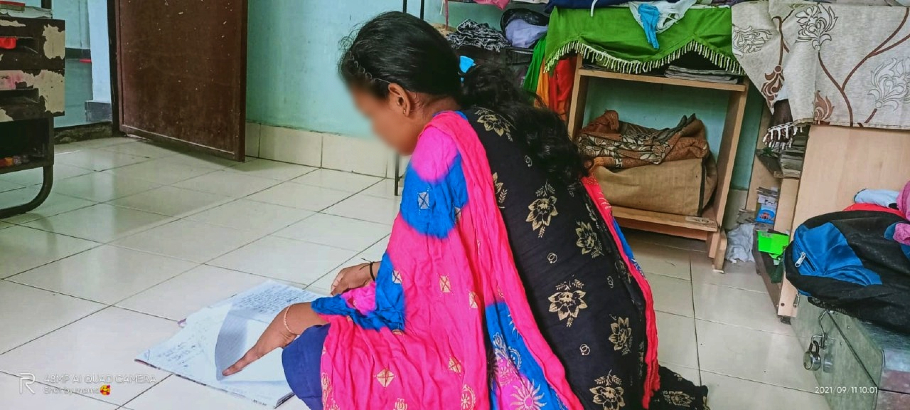
Completing high-school education is not common in rural and tribal heartlands. Most children drop out after primary school (Class 1-5) and Class 8. That’s also because, unlike private schools in cities, kindergarten to Class 12 education is not offered in the same institution under the public schooling system. When schools change, so does the distance. In Sukinda alone, children have to walk 10-12 km to reach the nearest upper-primary and high school. Owning a bicycle is also rare; even if a family has one, it is used by the adults to go to work.
Ranjana Kumari, director of Centre for Social Research, Delhi, and chairperson of the NGO Women Power Connect-Girls Not Brides, does not see an immediate end to this. “During and after the pandemic, there is going to be a massive rise in child marriages. We have not only failed to create new policies to protect children, but also failed to implement the existing ones,” she says. “Politicians must be held accountable. What stops the army of politicians sitting in every block from doing something about it?”
Besides the education part, there is also a social angle to this. “We need to de-stigmatise pre-marital sex,” asserts Padma Shri and Ramon Magsaysay awardee Shantha Sinha. “Every sexual intercourse need not result in a marriage. We need to fight patriarchy too. Society has to stop seeing pre-marital sex as a sin. Instead, we need to educate the children that they are too young to bear the responsibilities that come with marriage,” says Sinha, the founder-chairman of the National Commission for Child Rights (NCPCR).
In most of the child marriage incidents, including the three stories here, neither the boy nor the girl had any knowledge of contraception. DCPU’s Jena says: “Besides child protection forums, the government must set up health departments in every district to provide sex education to the entire community. There is no concept of using condoms at present.”
Perhaps the solution would be a combination of all—improving access to education and ensuring retention of children in schools, providing sex education and gender sensitisation, holding officials and politicians accountable, combating patriarchy and sexism, improving access to healthcare and medical facilities, and providing better employment and livelihood opportunities.
All of these, however, are processes that would take time to bear fruit. For the present situation, with destitute students of ashramshalas back at home since the lockdown and exposed to social issues, a solution to their many problems remains elusive.
(Note: The names of all minors have been changed in this report to protect their identity)

